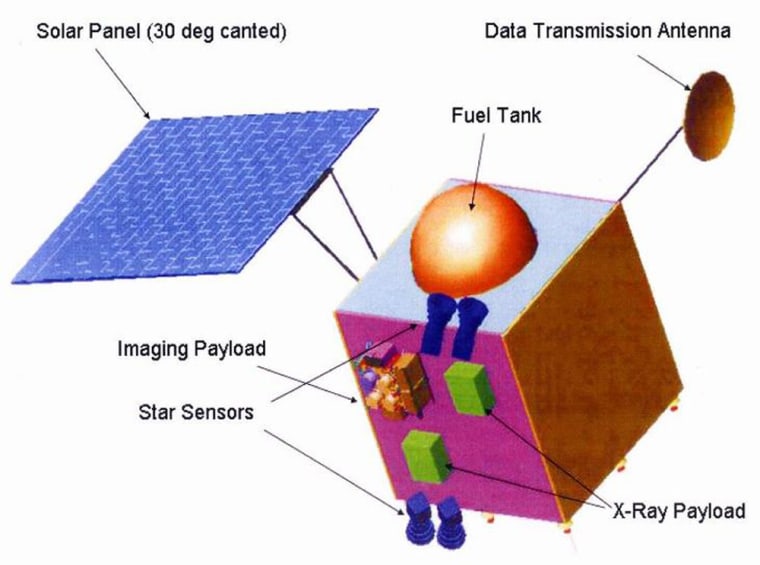An Indian unmanned mission to the moon will carry two NASA scientific devices designed to find minerals and ice on the lunar surface, a U.S. official said Tuesday.
The deal between NASA and the Indian Space Research Organization, or ISRO, is seen as another sign of the increasingly close ties between New Delhi and Washington after decades of Cold War estrangement.
The mission, called Chandrayaan 1, is set to launch in 2007 or 2008, according to the ISRO Web site, and will map the lunar surface using an array of sensors.
The collaboration, initially agreed upon during President Bush's visit to India in March, calls for two NASA payloads to be carried to the moon by a 1,160-pound (525-kilogram) spacecraft.
One of the American devices, a mini-synthetic aperture radar, will map ice deposits in the moon's polar regions. The other instrument, called a moon mineralogy mapper, will asses mineral resources, said U.S. Embassy spokesman David Kennedy.
Chandrayaan 1 will also carry three scientific instruments from European research centers.
NASA Administrator Michael Griffin and ISRO Chairman G. Madhavan Nair signed the deal Tuesday in the southern Indian city of Bangalore.
After the signing, Griffin said he hoped that "as we extend the reach of human civilization throughout the solar system, the U.S. and India will be partners on many more technically challenging and scientifically rewarding projects."
Ties between New Delhi and Washington hit a low point when the United States and other Western nations imposed economic sanctions on India after it tested nuclear weapons in 1998.
The sanctions delayed ISRO's plans to develop its own engine for launching space vehicles.
However, most sanctions have since been lifted, and a civilian nuclear cooperation deal signed in March by Bush and India's Prime Minister Manmohan Singh is seen as the cornerstone of the emerging strategic partnership between the world's dominant power and one of Asia's economic powerhouses.
India began its space program in 1972, and has previously used engines from longtime ally Russia to launch satellites.
